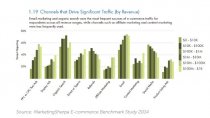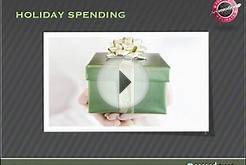 It’s March and that means we are well into 2015. You’ve got 9 months left to get it right and only 7 months before the holiday season officially kicks off. So are you ready to increase your revenue this year and make 2015 your best year yet?
It’s March and that means we are well into 2015. You’ve got 9 months left to get it right and only 7 months before the holiday season officially kicks off. So are you ready to increase your revenue this year and make 2015 your best year yet?
If you answered an enthusiastic absofrickenlutely sign me up YES to the above question (because why would you not?), you might be asking yourself a few questions:
- How do I entice people to buy more and spend more from my store?
- What do I do to get customers to make purchases more frequently, or in greater volume?
- How do I decrease shopping cart abandonment?
- Or maybe you just want more people to start coming to your website….
Whatever your goal may be, we (the springbots) always suggest creating time-sensitive eCommerce marketing promotions that have a good grasp on your target customer demographic. If you do this, you’ll be able to incentivize the right people to take the right actions, get them to respond, and voila, you just accomplished your 2015 revenue goals.
We also found for you SEO theme.
However, before you start creating revenue generating butt-kicking marketing campaigns, you first need to understand the 3 very different stages of the buying journey. By understanding these stages, you can better target your campaigns to the right person with the right message at the right time.
- Stage 1: Before they meet you and your store: For many purchases, the buying journey starts when the consumer decides that they need a specific product, such as a new pair of shoes. Or maybe, you’re such a good marketer that the consumer is not even aware they need new shoes…and then you show them the error of their ways. This aspect of the buying process looks at how a potential customer finds your store. Is it through organic search? Is it from some blog writer or maybe it’s from an AdWords campaign. Whatever the reason, they found you. Now what? How do you get them to convert? And how do you make sure that more and more people continue to find you and not your competitors.
- Stage 2: They’re in the middle of making a purchase: If you’ve reached this step, you should give yourself a pat on the back. You’ve created awareness and the consumer is ready to part with their hard earned money. You may think your work is done, BUT in reality you need to take the opportunity to upsell and/or cross-sell. This is the perfect stage to cross-sell them other related products, like socks to go with their shoes, or try to upsell them to a more expensive pair of shoes. Heck, maybe you are even running a product bundle promotion that encourages them to buy 4 shoes for the price of 3.
- Stage 3: After they make a purchase: As you may have heard a time or ten, it’s easier AND cheaper to sell more to an existing customer than to attract a new one. And we (the springbots) think it’s crucial that it be done right. This is also your opportunity to create brand/store advocates and increase customer loyalty. Maybe you want to run a promotion that targets the top 25% of your customers and offers them an exclusive offer to thank them for their loyalty. You could also always offer this segment of your customer base a first peek of all new merchandise and early access to all store promotions.
 For the purposes of this post, we are going to focus on 4 tactics that are specific to eCommerce marketing promotions (regardless of their selling stage) that are worth their weight in revenue gold when implemented correctly. They are:
For the purposes of this post, we are going to focus on 4 tactics that are specific to eCommerce marketing promotions (regardless of their selling stage) that are worth their weight in revenue gold when implemented correctly. They are:
- Why you should upsell like crazy
- How to stop the annoyance of shopping cart abandonment
- Why email is the bomb.com
- And the super obvious. Tracking your efforts.
Ready to get started?
1. Upsell Like Crazy
“May I interest you in this upgrade that you cannot possibly turn down because you cannot possibly live without (insert product)?
Most of us have heard some form of that question, probably in a more subtle way. It’s an example of upselling, or a way to get the customer to spend more money. Basically you want them to buy a more expensive model of the same type of product, or add features and/or warranties that relate to the product in question.
And guess what? Upselling works. In fact, says upselling is 20 times more effective than cross-selling online (and the reason we are focusing on it in this post).
Now what? We think that when it comes to successful upselling, there are two main tactics to focus on: 1) Make your upsells related to the original product. For example, if your customer wanted to buy boots, you probably do not want to upsell a pair of sandals. It’s confusing. 2) Always remember to be sensitive to the price range of your customers. Just keep in mind that your product has to fit the original needs of your customer, and that they may not be very enthusiastic about a higher product price once they have an anchor price in mind. The new product must really be better than the original.
2. Stop “Abandoning” Easy Revenue Tactics
You’re losing money by missing out on potential orders. But don’t take it personally. It happens to the best of us. And even better, it’s an easily fixed problem.









